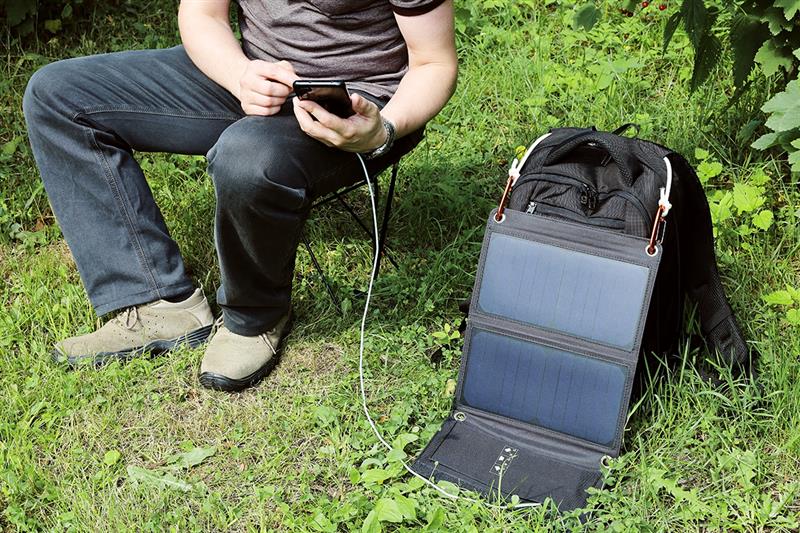Introduction
A few years ago, when most of us thought about solar power, we pictured shiny panels on rooftops of houses or giant solar farms stretching across deserts. It was clean, futuristic and a little out of reach for the average person. But times have changed. Solar is no longer confined to rooftops or large projects, it’s now something you can carry with you, plug into your devices and even take along on a road trip.
India, with its endless sunlight and growing appetite for sustainable solutions, is now witnessing the rise of portable solar power. From villages that leapfrog over unreliable electricity grids to city millennials packing solar chargers for weekend treks, portable solar has started to weave itself into our daily lives in surprising ways.
Why portable solar matters for India
India has always had a complicated relationship with electricity. While cities enjoy relatively stable power supply, rural areas still face outages and low connectivity. Even in urban centers, rising energy costs and growing environmental concerns push people to look for alternatives.
Here’s where portable solar finds its sweet spot:
- Uninterrupted Power: For rural areas, a portable solar unit can mean light after sunset, charging a phone or powering a fan.
- Affordability: Portable kits are often cheaper than large installations and can be scaled up gradually.
- Sustainability: With increasing awareness about climate change, individuals are more willing than ever to adopt green alternatives.
- Independence: Imagine not having to depend on the grid or diesel generators every time the lights go out.
In short, portable solar is democratizing energy, making it accessible, personal and mobile.
From rooftops to road trips
The beauty of portable solar lies in its versatility.
1. Rural empowerment
In many villages, the nearest electricity pole may be kilometers away and power cuts can stretch for hours. Small solar lanterns, cookers and home kits have become lifelines, especially for children studying at night or families needing basic lighting. Organizations and startups have been distributing these solutions across India, bridging the last-mile energy gap.
2. Urban convenience
In cities, solar power banks, foldable solar mats and compact rooftop kits are becoming increasingly popular. Whether it’s working professionals who want to keep their devices charged during long commutes or homeowners looking for emergency backup, portable solar is stepping into everyday life.
3. Adventure and travel
Here’s where things get exciting. The new generation of travelers and campers is carrying solar power on their backs. Imagine pitching a tent in the Himalayas and powering your camera, GPS or even a small cooler, all with sunlight. Road trips across India, where charging stations are still catching up, are now easier with foldable solar chargers and rooftop solar kits for caravans. Portable solar is turning into the travel companion nobody knew they needed.
The technology behind it
So, how does portable solar really work?
At its core, it’s the same principle as large solar plants: photovoltaic cells capture sunlight and convert it into electricity. What makes portable solar different is:
- Size and Mobility: Panels are smaller, foldable and easy to carry.
- Integrated Storage: Many come with built-in batteries or can charge external ones for later use.
- Plug-and-Play Design: No need for complicated wiring or inverters; they often come with direct USB or appliance ports.
This simplicity makes it appealing not just to tech enthusiasts but also to rural households with no technical background.
Driving factors behind its rise
Several trends are pushing portable solar into the mainstream in India:
- Falling Costs: Solar panels are cheaper than ever, thanks to global demand and local manufacturing.
- Government Push: Initiatives like Make in India and solar subsidies are encouraging adoption.
- Climate Awareness: More Indians are choosing eco-friendly solutions, especially younger generations.
- Lifestyle Shifts: A growing culture of trekking, camping and remote work means people need energy on the go.
Together, these factors have created the perfect storm for portable solar to shine.
Challenges on the horizon
Of course, portable solar isn’t without challenges.
- Durability: Many low-cost products don’t last long in harsh Indian conditions.
- Awareness: Despite its benefits, many people still don’t know these solutions exist.
- Scalability: Portable solar can handle small appliances, but larger power demands still require bigger infrastructure.
- Upfront cost: Even though prices are falling, the initial cost can be high for rural families.
These challenges need to be addressed through better design, awareness campaigns and government or private sector support.
The future of portable solar in India
Looking ahead, portable solar in India isn’t just about lamps or phone chargers, it’s about energy independence.
- We could see solar integrated into everyday items: backpacks, clothing, vehicles.
- Caravans and electric vehicles might come with built-in solar roofs for self-charging.
- Remote workers could set up mobile solar workstations anywhere in the country.
- Farmers may use portable solar pumps for irrigation in fields far from the grid.
As technology improves and adoption grows, portable solar has the potential to revolutionize not just how we consume power, but how we think about it, from a commodity to a personal resource.
Conclusion
The story of solar in India is no longer just about massive farms feeding megawatts into the grid. It’s about the small, personal and portable solutions that are quietly empowering people, from villages to highways.
From a child studying under a solar lamp in Bihar, to a group of friends charging their gadgets on a camping trip in Ladakh, portable solar is rewriting India’s energy story. The rise of portable solar is not just about technology. It’s about freedom, the freedom to work, travel and live without depending on unreliable grids or polluting fuels. It’s about carrying your own sunshine, wherever life takes you.


